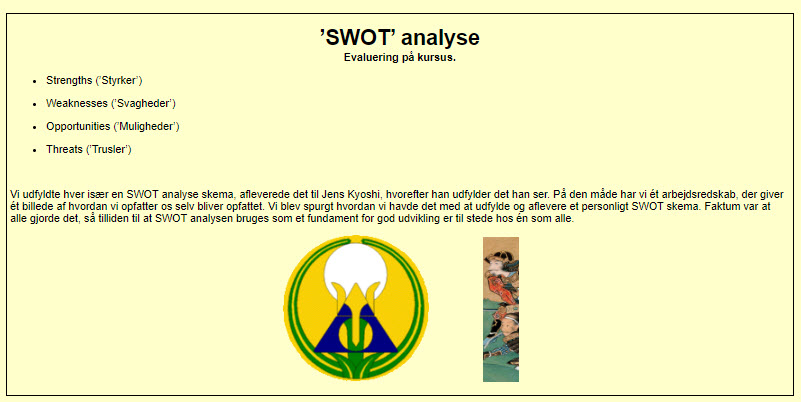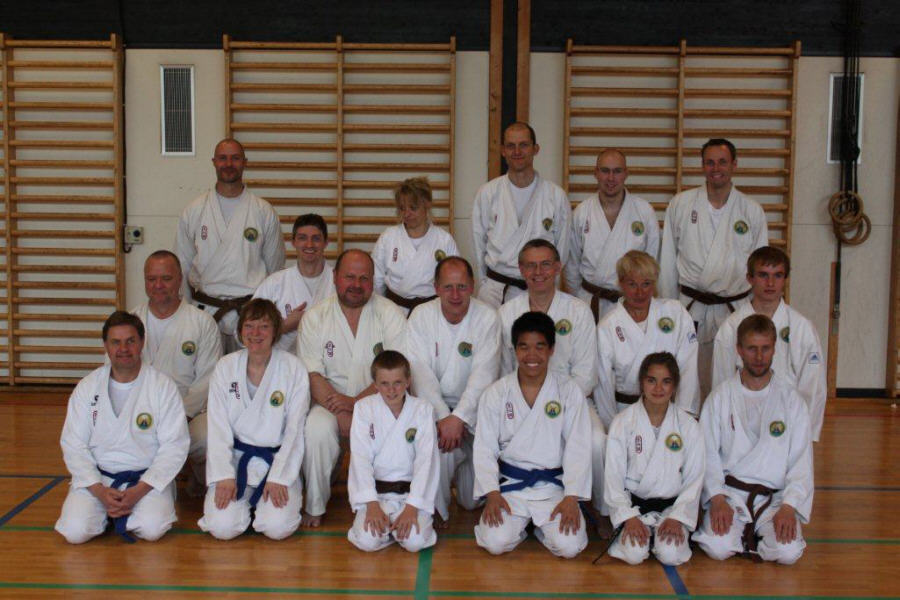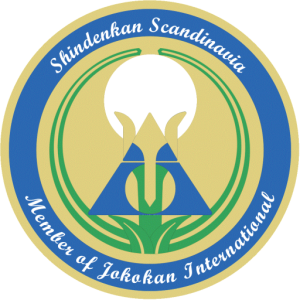
By Christian H. Olsen, Member until 2022
THEORETICAL PART approx. 1 hour
During the theoretical part in the classroom, we were taught by Jens Kyoshi. First, the structure of the instructor-course series was outlined. Then purpose and content. There were 18 course participants, ranging from green to black belts, who now took part in course no. 3. Jens Kyoshi, as the only one present, has been on course no. 8 and Søren, Martin, Brian and Kjeld Renshi-dai on no. 1 to 7. Areas of responsibility and tasks, work tools and measurement points for a school's head instructor, a co- and assistant instructor were defined and reviewed. Key performance indicators gave food for thought. Am I now also measured on my students' results and not just on my own? Do I do as I say and do I say as I do? Can and do I want to take on the role of instructor, do I take 100 % responsibility and am I a good role model for my students? If the answer is no, I guess I'll just have to take what I can get. If I say yes, I have the opportunity to learn not only about and from myself, but also about and from my students. I want to - do you want to?
TASKS – Schedule a Training Session, Schedule AGAIN, and Schedule Information
PRACTICAL PART approx. 2½ hours
During the practical part in the Dojo it was 'learning by doing'. Here it became clear both to oneself and to others what works and what does not. 'Good preparation is half the work', and 'Practice makes perfect', and then one about 'the true leader learns not only from his own mistakes but also from others' say three old sayings. This was clearly expressed in our tasks of planning two or three teaching and training sessions of 3-4 minutes duration.
We were divided into two teams of nine in each, where one to two instructors took turns with three of us taking on one of four predetermined roles. The (un)possible students were a challenge for all of us as instructors. It was instructive to be there and observe, and during the second pass to use tools such as voting and 'prizes'. Halfway through, we went through the Shindenkan circle with a cone ball league from the other group. As instructors, we must also be able to perform the circle technically correctly. The third exercise was about communication. Finally, a SWOT analysis and photo.





